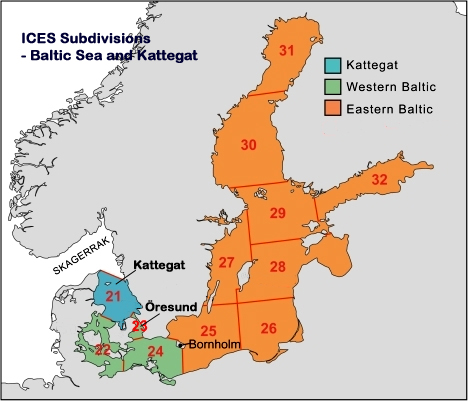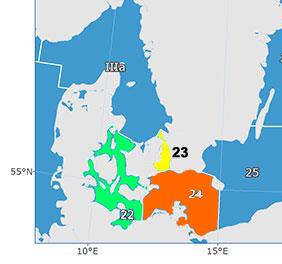Last week, the EU fisheries ministers agreed the 2017 quotas for cod in the Baltic Sea. For the Western part of the Baltic Sea recreational fisheries management measures were agreed for the very first time, namely a bag limit of five cod per fishing day most of the year and a three cod bag limit in February and March.
The European Anglers Alliance and its members have urged, but in vain, not to treat the whole of the Western Baltic Sea area as one unit but to take into consideration the peculiarities of the three very different management units which make up that area. In particular, the Öresund Strait is very different from the rest of the Western Baltic Sea. In the strait the cod population is healthy and abundant, mainly because of a trawling ban put in place in 1932 due to the heavy traffic in the strait. There is a strong argument based on documentation (1; 2) that there really is no need for a bag limit in this strait. Unfortunately, the European Commission and Member States chose differently, that all three western areas should be treated as one.
The scientists and the European Commission had suggested a cut in cod catches of 88% for all of the western area but the Member States reduced that to 56%. Thereby, the way we see it, the fisheries in the Öresund Strait have been hit too hard, and fisheries in the two other areas possibly too light.
EAA will continue to lobby that the Western Baltic Sea should be split into three areas next year so management and measures can be fine-tuned to better align them with the fisheries and the biological reality.
ICES areas 22-23-24


1) - European Parliament - Policy Department B: Structural and Cohesion Policies (2010)
“Long-term impact of different fishing methods on the ecosystem in the Kattegat and Öresund”
www.cfp-reformwatch.eu/pdf/kattegatt_oresund_trawl.pdf
2) - ICES Journal of Marine Science, 70: 1081–1084
http://icesjms.oxfordjournals.org/content/70/6/1081.full
“...the yield of cod per unit area is about two magnitudes higher in the Öresund than in the Kattegat. In the Kattegat, the total biomass of cod has declined from over 30,000 t in the early 1970s to less than 2,000 t in recent years... A very likely prerequisite for this sharp division in productivity, supported by tagging and otolith chemistry analysis.. is the existence of closed subpopulation units in the Öresund and the Kattegat. The rather separate and sedentary cod stock in the Öresund only suffers to a minor extent from exploitation outside the area.”